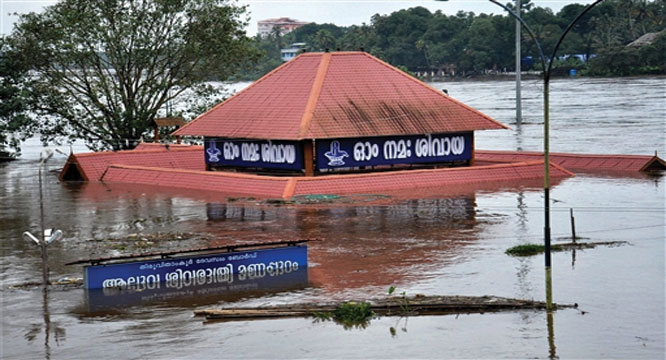True, a natural disaster is a dangerous, unstoppable event. And, when natural disasters strike, they not only engage the news but engage brands, organisations and thousands of people around too.
Currently, the floods that have wrecked havoc in the state of Kerala have been breaking news, day after day. Kerala as a state, accounts for less than 5% of India’s population and is a highly consumption-oriented state, according to government data. It has been affected by the worst floods, it has witnessed in a 100 years. What does this type of disaster look like from a communications standpoint? Here, we can try and highlight the importance of communication during natural disasters.
PR professionals can work with clients and in-house professionals can work with their management to deploy products/services that can help those affected. Kerala floods have ravaged thousands of homes and killed over 300 people so far. As lakhs still remain trapped, stranded, missing, and displaced in relief camps, the government has formed the Chief Minister’s Distress Relief Fund (CMDRF) for donations in rescue and relief operations.
Pitching in – to help
Here’s taking a look at what brands are doing to help the Kerala flood victims. Tech companies are pitching in, to contribute to the welfare of those affected by the floods. Companies like Google, Paytm, Amazon, Facebook, Twitter, Big Basket, Zomato, Ola, Truecaller, and many more have come forward to help in rescue operations and food distribution. Telecom majors have also tried to offer help in the form of data, talk time, and toll-free numbers to help the affected.
Google has activated its Person Finder tool to help find missing people. Amazon India has partnered with several NGOs, for relief operations and is urging its customers to donate. Paytm has activated a Kerala flood donation button that is linked to the CMDRF’s account directly – to help aid rescue operations. Truecaller has followed suit. Twitter hashtags like #KeralaFloods and #KeralaFloods2018 are being used by relief operations; and users impacted by the floods can look for these to find appropriate information. Big Basket partnered with Goonj for food donation, and is asking its customers to buy products that can then be delivered to victims.
Telecom operators like Airtel, Jio, Idea, and others are offering data and calling benefits to prepaid customers in the state, while postpaid users are getting extension on bill payments as well as uninterrupted services. Idea has launched a service to help locate missing people and know their last location. Airtel, Jio, BSNL and Vodafone have also announced similar initiatives.
How to respond as a PR professional?
As a PR professional, knowing how to respond to natural disasters and connect people in times of devastation is key. Here are some tips:
- Extend your support
Even if your organisation was not directly affected by the natural disaster, showing support can demonstrate to your audience – your knowledge of the situation; while, at the same time, it also adds to your reputation. But, this is a delicate situation, so try not to overdo brand building in the event of a natural disaster.
- It’s not about you, focus on the affected communities first
If your organisation decides to respond, make sure the focus is on the community first and the business second. While it is not wrong to create a better public representation of your brand, but doing this before focusing on the community and people affected by the natural disaster, can indeed create a negative response.
- Try to connect your audience to help out
Your audience can access the means to donate toward relief efforts – if you can post a link. This can make a huge difference. Either linking to your organisation’s website or social media can create awareness. And, increased awareness will usher in more donations – monetary and even non-monetary (like water, food and other goods).
- Monitor traditional and social media
In the midst of a disaster or crisis, one must monitor the coverage of traditional print, broadcast media as well as social media. In addition to helping you keep tabs on developments that you may not otherwise be aware of, monitoring the media is necessary to rapidly respond to inaccuracies and ensure your actions are aligned with the public’s interest.
- Response times should be super fast
When a real crisis emerges, to mitigate the risks, your crisis management team must take control quickly, lead decisively, communicate fluently, and inspire confidence in everyone both inside and outside your organisation.
- You can emerge stronger
Almost every crisis creates opportunities for organisations to spring back. You can come back stronger!
So, your organisation can not only create a more positive reputation for your brand, but it can also make a REAL difference in the lives of those affected by any terrible natural disaster.






Be the first to comment on "Public Relations in times of natural calamities"